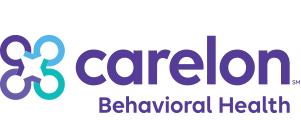Are you unsure whether you or your loved one is struggling with prescription drug addiction? Read below to learn how to spot the warning signs.
Understanding Prescription Drug Addiction
Learn about prescription drug addiction
Prescription drug abuse is an issue that continues to increase in intensity throughout the country. While prescription medications offer relief from medical ailments for numerous individuals, there are some who fall into destructive patterns of abuse with these substances because of the mind and mood-altering effects they produce. Some of the most commonly abused prescription medications can include:
- Antianxiety medications (e.g., Klonopin, Valium, Xanax, etc.)
- Stimulants (e.g., Ritalin, Adderall, etc.)
- Pain medications (e.g., Vicodin, morphine, OxyContin, etc.)
- Sedatives (e.g., Ambien)
When these medications are consumed in larger doses than prescribed, or when they are consumed more frequently than prescribed by a doctor, they can bring on feelings of pleasure that users start to crave. The specific effects that occur will be dependent on the specific medication that is being taken. For instance, stimulants can increase focus and one’s energy, while also serving to help those who consume it lose weight. Antianxiety medications, sedatives, and pain medications can trigger an onset of feelings of contentment, relaxation, euphoria, and detachment from one’s surroundings. The appeal of these effects can be intriguing to many, causing the pattern of prescription drug abuse and addiction to continue. Thankfully, by participating in the appropriate treatment interventions, these deadly addictions can be defeated.
Statistics
Prescription drug addiction statistics
Continued research has shown that the number of individuals who abuse prescription medications continues to increase. Specific studies have determined that roughly 52 million people in the United States have abused some form of prescription medication for purposes that were not medical. Furthermore, additional research has shown that prescription drug overdoses are responsible for more deaths than suicides, gunshot wounds, and car accidents.
Causes and Risk Factors
Causes and risk factors for prescription drug addiction
The causes and risk factors included in the development of a prescription drug abuse problem can include many components, which are described in the following:
Genetic: Research has provided evidence that there is a strong genetic tie to the onset of addiction, including the development of an addiction to prescription drugs. Those who have family members who battle prescription drug abuse are at an increased risk for partaking in the same type of behavior than those who do not have the same genetic background.
Environmental: The environment in which an individual is surrounded can impact his or her chances of starting to abuse a prescription medication. For instance, those who are surrounded by substance abuse are more likely to partake in substance abuse themselves, including the abuse of prescription drugs, than those who do not have this type of exposure. In addition, individuals who are able to obtain prescription drugs without having to jump through hoops to do so are more likely to start abusing them as well. Furthermore, those individuals who suffer from conditions that require them to take prescription medications are more likely to partake in patterns of abuse, as they have an ongoing availability to the medications.
Risk Factors:
- Exposure to substance abuse at an early age
- Personal history of other substance abuse
- Personal history of mental illness
- Ongoing exposure to stressful situations or other types of conflict
- Suffering from pain conditions for which prescription medications are taken
- Ease of access with which one can obtain prescription drugs
- Family history of mental illness
- Family history of substance abuse and addiction
Signs and Symptoms
Signs and symptoms of prescription drug addiction
When individuals are abusing prescription drugs, the signs and symptoms that they might show will vary based on the specific type of medication that they are taking. However, some common behavioral, physical, cognitive, and psychosocial symptoms that might develop and can show that an individual is struggling with a prescription drug abuse problem can include:
Behavioral symptoms:
- Frequent absences from work
- Going to multiple doctors to obtain multiple prescriptions
- Altered ability to perform occupationally
- Lying
- Stealing or borrowing money
- No longer participating in activities that one once found enjoyable
- Withdrawal from friends and family
Physical symptoms:
- Decline in personal hygiene
- Impaired coordination
- Changes in sleeping patterns
- Changes in eating habits
- Bloodshot eyes
- Tremors / shakes
Cognitive symptoms:
- Altered perceptions of reality
- Confusion
- Disorientation
- Declined reasoning capabilities
- Concentration difficulties
- Declined ability to use decision-making skills
- Loss of sound judgment
Psychosocial symptoms:
- Irritability
- Agitation
- Decline in motivation
- Depression
- Anxiety
- Periods of emotional detachment or emotional numbness
- Loss of interest in activities once enjoyed
- Mood fluctuations
Effects
Effects of prescription drug addiction
When prescription drug abuse is a continued factor within an individual’s life, he or she is susceptible to experiencing a number of damaging effects. Examples of these effects can include, however are not limited to, the following:
- Disturbed relationships
- Familial discord
- Decline in overall physical health
- Memory disturbances
- Onset of, or worsening of, symptoms of other mental health conditions
- Cognitive impairment
- Declined ability to perform well occupationally, potentially resulting in job loss
- Chronic unemployment
Withdrawal
Signs, symptoms, and effects of prescription drug withdrawal
If an individual’s body has become accustomed to the presence of prescription medications and then is no longer provided with that medication, his or her system can experience a period of withdrawal. Examples of possible signs and effects of prescription drug withdrawal can include:
- Feelings of depression and anxiety
- Profuse sweating
- Tremors
- Feelings of agitation and irritability
- Restlessness
- Muscle weakness
- Nausea
- Abdominal cramping
- Hallucinations
- Confusion
- Fatigue
Overdose
Signs, symptoms, and effects of prescription drug overdose
When individuals consume more of a substance than their bodies can handle appropriately, they are at risk for suffering an overdose. Overdosing on prescription drugs is a life-threatening condition that requires immediate medical attention to prevent a deadly outcome. Signs that could show that an individual has overdosed on prescription drugs can include:
- Disorientation to person, time, place, and/or situation
- Seizures
- Decreased heart rate
- Clammy skin
- Changes in skin tone
- Dilated pupils
- Severe dizziness
- Severe breathing difficulties
- Losing the ability to communicate
- Falling into a coma
Co-Occurring Disorders
Prescription drug addiction and co-occurring disorders
It is common for those who are afflicted with prescription drug addiction to also be struggling with symptoms of one or more other mental health conditions. Examples of such conditions can include:
- Borderline personality disorder
- Depressive disorders
- Posttraumatic stress disorder (PTSD)
- Bipolar disorder
- Anxiety disorders
- Other substance use disorders







